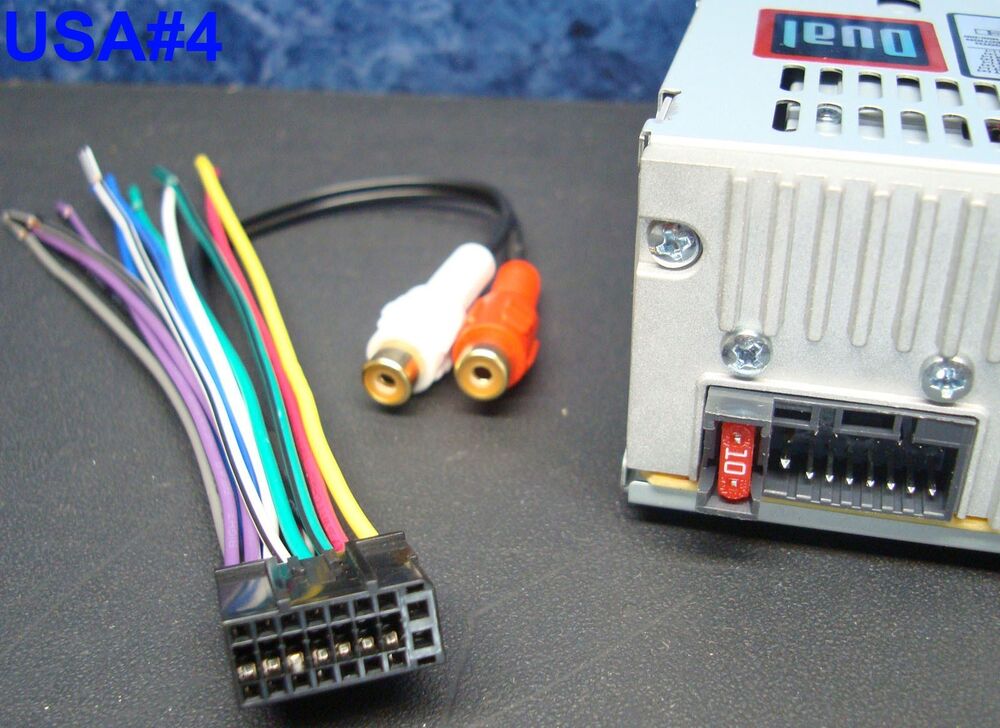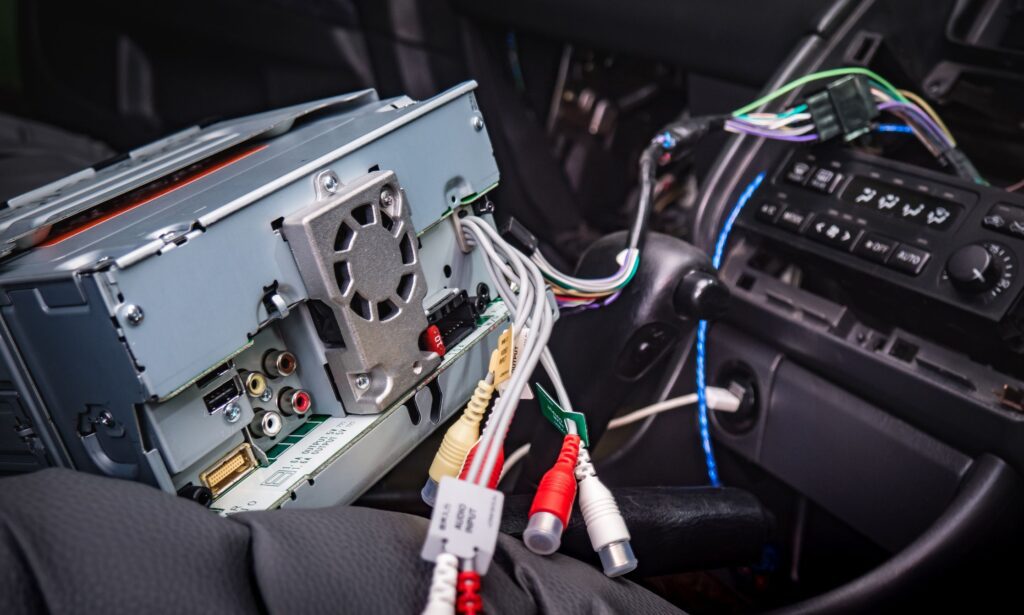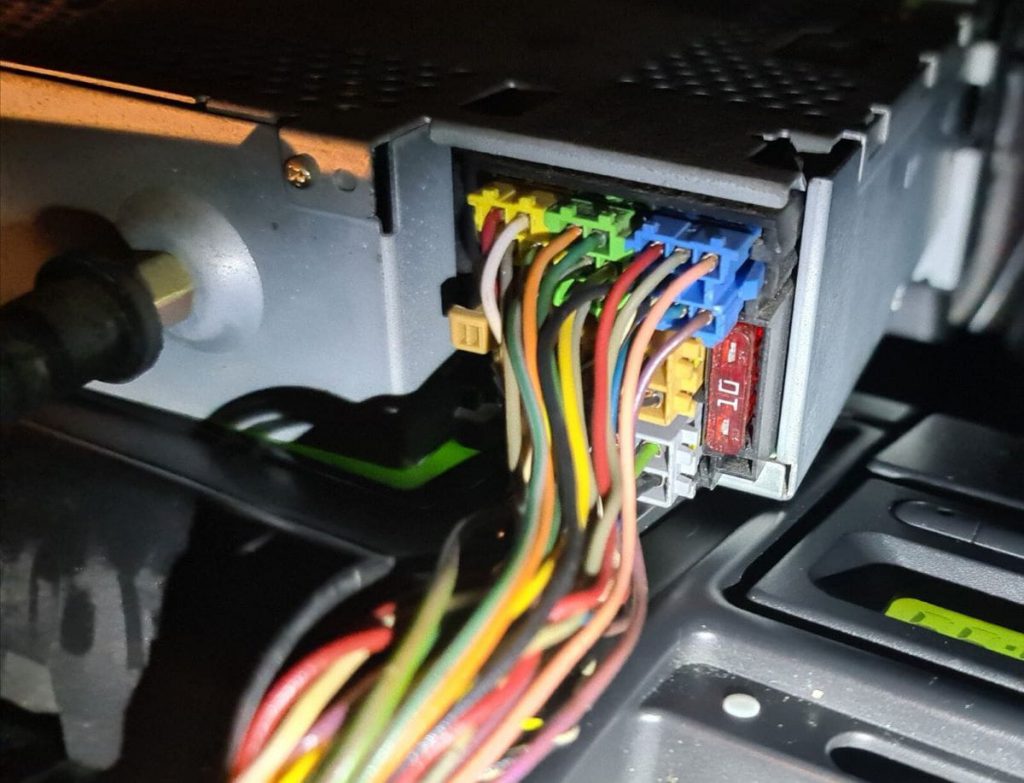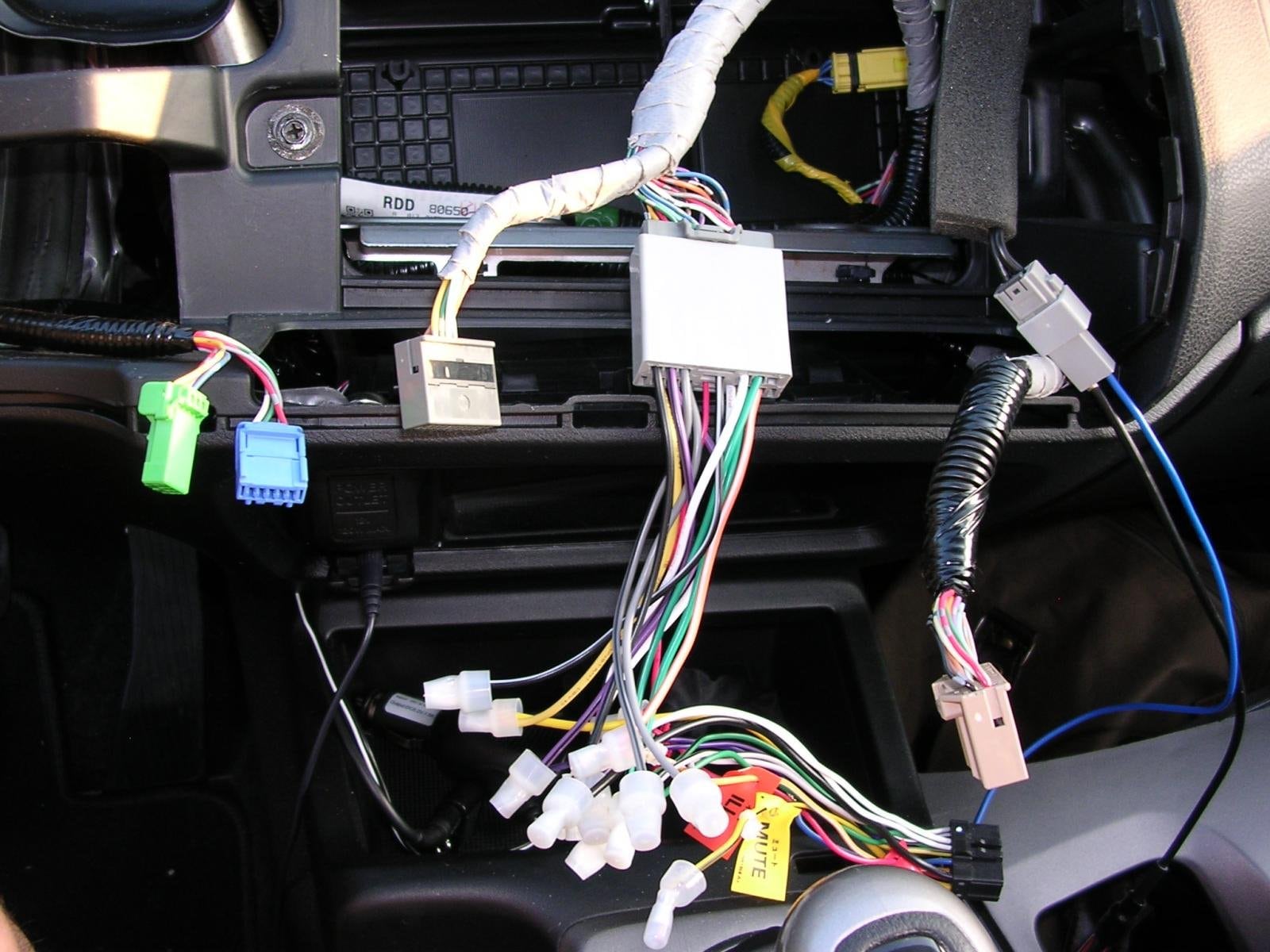Our guide below will show you how to wire a car stereo without a harness in some clear and easy steps. Get your sleeves up, you only need the suitable devices or connectors, and you’re ready to perform.
Contents
How To Wire A Car Stereo Without A Harness
If you are looking for an effective and persuasive way to wire a car stereo without using a harness, there are a few reasons why you might want to consider doing it this way. Maybe you are installing a refreshed stereo in an older car that did not come with a manufacturer stereo, or you are upgrading your sound system and want to add more upgraded amplifiers or other accessories. Just as the installing knowledge on different parts of the car, knowing how to wire a stereo device quickly and effectively is vital for any reason.
Overall, the wiring harnesses make the installation much more straightforward, providing all the necessary wires and connectors for the new car stereo. However, if you do not have a wiring harness, you should not worry, as you can install the new stereo with the necessary notices.
In general, there are diverse ways to connect your speakers to your car stereo without using a harness adapter.
Assuming that you do not have an external amplifier in your automobile audio system and that the speakers will be powered by your radio. We’ll also assume that you haven’t connected a harness to your radio for some reason. Here are several ways you can apply to connect your car speakers to the stereo without using a harness.
Get a reserve harness for your car stereo
Radio harnesses are very affordable and take little time to create. There’s a wide variety of radio antenna options available, so you are sure to find one that fits your needs. In most cases, these are affordable so there is no need to worry about spending too much money on them. Moreover, it would make the whole wiring procedure a lot easier if you decide to upgrade your car stereo on a short-term basis.

Upgrading using an existing detached one, you will have to reconnect all of your cables. That would be a hassle, and it would be even more difficult if your speakers are of different brands. You can use the methods below to attach a replacement harness to your system.
First, you can connect your speakers to your radio using a soldering method. The simple technique involves connecting the radio wire to the terminals on each speaker and then using heat shrink tubing to protect the connection. Moreover, this approach is preferred because once the wires are welded and connected, there will be less room for error, and the wiring connections will be more long-lasting. With superior quality, you can be sure the equipment will not break or fault as fast as others.
Just strip off one end of each wire, stuff the heat shrink tubing around the wires, and weld them together. To keep the heat shrink tubing securely attached to the soldered connection of the wire, you can use a heating device like a hairdryer.
For a secured connection between your speakers and your radio, you can also use a crimp clamp. This simple tool will help to keep your speakers warm or cool, depending on your preferences. If you are looking for a way to join two cables together, terminal connectors are ideal. They’re designed specifically for connecting two cables, which means you will have a connection that will be durable.
Moreover, the technique for crimp terminals is the same as for soldering with a soldering iron. With these small clamps and a crimping tool, you can compress the ends of the wire very tightly. To avoid potential interference, you’ll need to cut the speaker wire on both ends and push them together. The cables will be securely attached with a crimp on both sides.
Wire your head unit harness for a car stereo
Assembling a wiring harness for your stereo is not as complicated as it may seem, provided you have the right tools and follow the instructions carefully. With the right tools and materials, it is easy to complete the task. But you should be patient when working with wires and be very careful when handling them.
Starting is essential if you want to produce the best results. Here are the supplies you need to help you succeed. You’ll need a wire stripper, a cutter, a soldering iron, and electrical tape to complete this project. You will also need a car radio in a ventilated cabin and a high-quality electrical circuit or wiring diagram.
With all the tools and materials you need, you can start to put the harness together. To properly enjoy your stereo later, carefully find the positive and negative wires. These color-coded wires are usually easy to find. After locating the wires, use the wire stripper to remove a small section of the insulation.
Next, you need to solder the wires to the stereo. This will ensure a strong connection and improve sound quality. Make sure to use a strong soldering connection so that your project stays secure. When the wires are welded to the stereo, insulate them with electrical tape.
Lastly, to ensure that your wiring harness is functioning correctly, you will need to test it. To test whether the stereo is generating the sound, turn it on and listen. If you can not hear any sound, it may be because the connections between your device and the speakers are not secure. Make sure they are connected and functioning well. And if the harness behaves better as it should, you can install it in the dashboard area.
Wiring a car stereo without using a harness
To effectively wire a car stereo without a harness adapter, you may need a few necessary items:
- Wire stripper
- Insulating tape
- Screwdriver
- Slotted screwdriver
- Torx wrench
- Pliers
- Knife (non-compulsory)
There is a variety of stereo wiring processes depending on the make and model of your car. However, the steps are largely the same no matter what vehicle you have.
Step 1. Disconnect car battery
Before you work on any electrical system, be sure to disconnect the battery to ensure your safety. This safety act prevents you from damaging any wires and resulting in a spark.
Step 2. Disconnect the old car stereo
To get started, you need to remove any obstructions that may interfere with the removal process as small panels. If you need to remove a car stereo from your vehicle, first remove Phillips screws or clips with a screwdriver.
In addition, if there are any other electrical connections connected to the car stereo, be sure to pay careful attention to how they are connected and their wiring so that you can reconnect them correctly later.
Once the trim details and other barriers are temporarily gone, you will see 4 bolts keeping the car stereo fixed in a designed place. In most cases, the sometimes-appeared metric bolts will need a matching wrench or socket to dismiss. Then after removing these, you can easily remove the stereo from the dashboard.
Step 3. Check and identify the proper wire connections
With the old stereo gone, you can now identify which wires are suitable to connect to your upcoming-attached stereo.
Choosing while matching the right wire colors for your new car stereo is essential for a fast and effective installation. Each wire will have specific purposes, and you will want to know where each goes. So it is best to check the wire color and pole for a safe and better wiring procedure. We will mention these connections later in this article, so please stay tuned.
Step 4. Connect the suitable wires to your new stereo
To attach your new stereo to your car, identify the colors of the wires that match up with your vehicle. After doing so, connect these wires to the corresponding wires on your stereo.
When you are not sure which wires to link, refer to the original installation guide that came with your new stereo or consult an experienced stereo installer. On the other hand, if you can not find detailed instructions online or elsewhere, you can probably find them in the vehicle’s user manual.

Step 5. Attach the power wire to the electrical system
Connecting your new correspondent stereo wires to your vehicle’s electrical system will provide better sound quality. Moreover, make sure your cords are securely connected. Because if your new stereo is not properly wired, you can risk causing a short circuit or damaging the whole device.
To complete your DIY car stereo set-up or any other project that needs the same wiring methods as the speaker and ground one, you can always repeat the identical steps without worrying about safety and time-consuming issues. Make sure every wiring connection within the system is secure and will not deteriorate over time with one simple double-checking step.
Step 6. Establish and install the new stereo
Once every wire is linked, you can easily install your new stereo. The manufacturer may know how important it is to have a good stereo in your car, so they have made it easy for you. Just push the stereo deep into the dashboard until it clicks, and it will be securely attached. Then, make sure the trim and obstacles removed before are all attached.
Step 7. Check the new stereo again
Before putting everything back in order, test the new stereo to see if it is functioning. Starting the car and turning on the stereo are simple steps to both check and enjoy your music shortly. You can see the turned-on display screen while controlling the radio volume and extra functions if everything operates as it should.
If you experience any issues, check your wiring carefully to ensure everything is wired and connected correctly. If you still have trouble with your stereo, we recommend testing it again. And once you are sure your new stereo is working fine, you can place everything back together in the opposite order as before and enjoy the sound from your newly attached car stereo.
Things To Consider When Wiring Your Car Stereo Without A Harness
There are several ways to connect your car speakers to the radio without a harness. The best one for you will be based on your needs. Before you start the installation process, there are a few things you need to notice.
The amplifier in the head unit
Regardless of the audio system type you have or where the car amplifier is, any audio system is all based on the same principles. You can find a sound/music origin, such as a radio, CD player, or streaming service, to listen to this recording. After that, your prepared equipment must be connected to an amplifier that transforms the low-level signal to line one.
All car stereos come with a preamp, so you won’t have to worry about anything. The signal coming from it will be boosted and sent out through the speakers via an amplifier.
Is a built-in amplifier available?
The radio in your vehicle’s original equipment manufacturer (OEM) may include a built-in amplifier, depending on the audio system setup. It is not uncommon. So you can hook your speakers to the car stereo anytime with convenience. But in the end, if you install a brand new car stereo, make sure it has an amplifier. Otherwise, you will need to get a separate amplifier.
Is there any external amplifier?
If your audio system has an outer amplifier, you will not connect the speakers to the radio. In this situation, using a harness to connect the speakers to the amplifier would be a waste since the speakers can directly wire to the terminals of the amplifiers.
The car factory audio system may not be up to date, and that’s why an external amplifier is more offered. With continued technological advancements, car manufacturers now include external amplifiers in their original systems more and more.
Overall, aftermarket car amplifiers follow a similar process. You can easily connect your aftermarket radio’s RCA outputs to your amplifier, then hook up the speakers to an external amplifier with speaker wires.
Identify your wiring colors and connections
A key part of installing a new car stereo is ensuring that the wire colors and traits are matched. Many wires will get in your sights, and it can be a bit complicated to know what each one does, where each one goes, and what its function is.

But do not worry, the below guide will give you an all-around idea of the meanings of aftermarket stereo wires and their daily functions.
- Red – Right rear speaker anode (+)
- White – Right front speaker +
- Green – Left rear speaker +
- Purple – Left front speaker +
- Gray – Negative (-) ground (cathode ground)
- Yellow – Lighting/lighted accessory (I/IIAC or I2ACC or 11 ACC)) control, Battery constant power wire
- Blue – Lighting ground (Lighted accessory control, Battery constant power)
- Black – Chassis ground, Negative (-) audio ground
- Orange – Power antenna (power the remote amplifier or ANT1 connector)
- Tan or Brown – Left rear speaker negative (-), Rear speaker negative (-) ground, and Subwoofer negative (-) ground.
- Pink – Left front speaker (+), Backup lights, and Brake lights.
Wiring A Car Stereo Without Harness Troubleshooting Tips
If you’re having trouble getting your car stereo to start after wiring it without a harness, below are some tips when wiring you can take notes today.
- Ensure that all of your audio components are wired and connected. After all, you can consult the stereo wiring diagram to get help with this smooth issue and finish the task easier.
- If you are using an aftermarket car stereo, carefully check to make sure it is compatible with the car’s electrical system. Remember that some car stereos need specialized harness adapters to get them installed properly.
- Make sure all of your connections are secure. Because poorly connected or loose wiring cords can lead to unexpected severe problems.
Wrapping Up On How To Wire A Car Stereo Without A Harness
We have just gone through detailed steps on how to wire a car stereo without a harness and a few notes before and during your process. We hope this article will give you some insight to help you a little with the upcoming wiring projects.
For more car maintenance tips, visit Car From Japan today.



